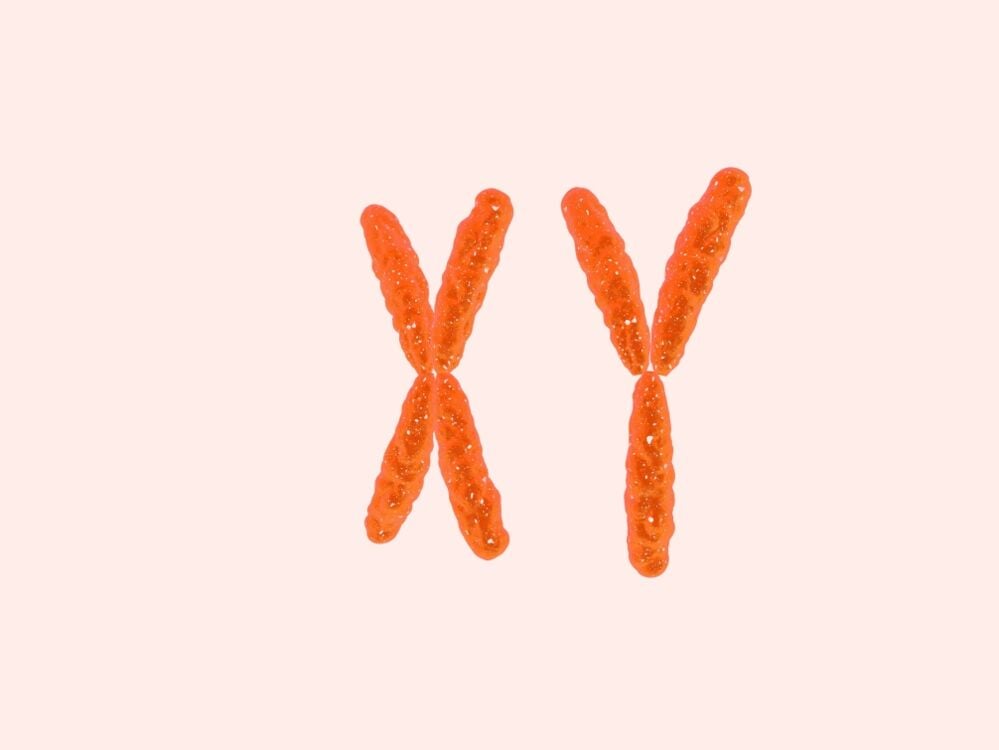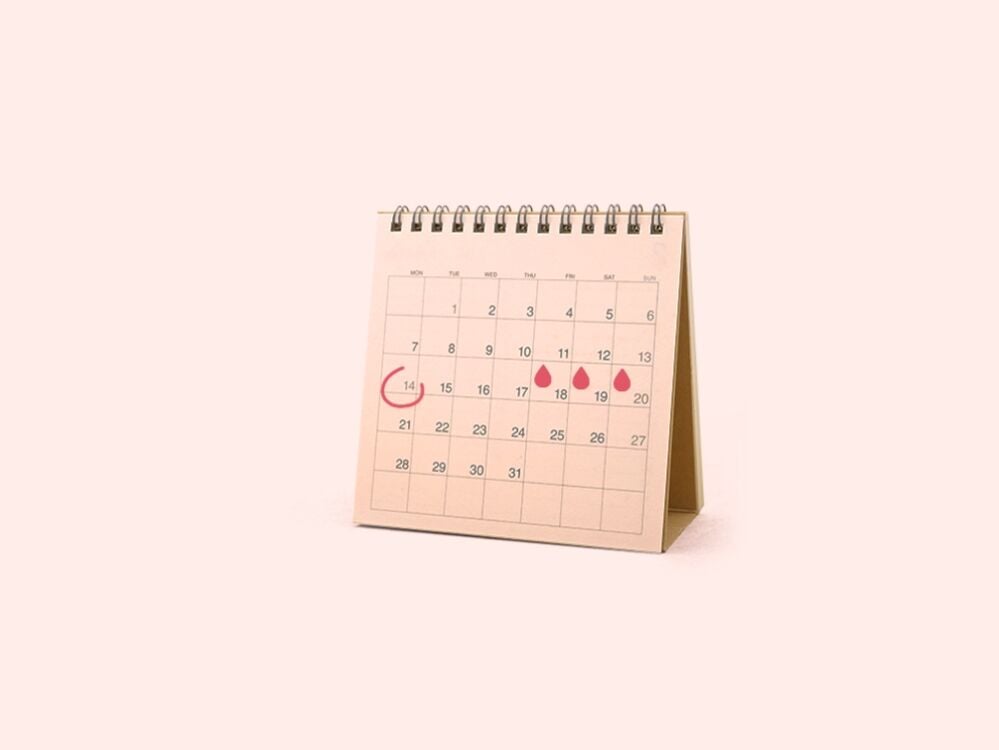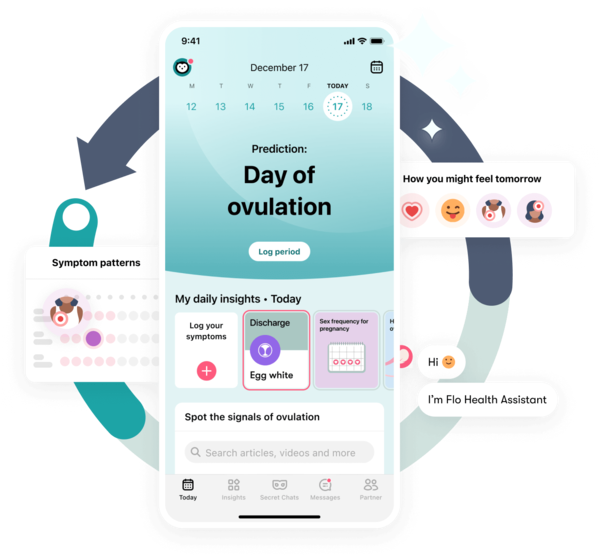From sex positions to timing conception, there are plenty of claims about increasing your chances of conceiving a baby girl. Let’s pick fact from fiction with help from a gynecologist.
-
Tracking cycle
-
Getting pregnant
-
Pregnancy
-
Help Center
-
Flo for Partners
-
Anonymous Mode
-
Flo app reviews
-
Flo Premium New
-
Secret Chats New
-
Symptom Checker New
-
Your cycle
-
Health 360°
-
Getting pregnant
-
Pregnancy
-
Being a mom
-
LGBTQ+
-
Quizzes
-
Ovulation calculator
-
hCG calculator
-
Pregnancy test calculator
-
Menstrual cycle calculator
-
Period calculator
-
Implantation calculator
-
Pregnancy weeks to months calculator
-
Pregnancy due date calculator
-
IVF and FET due date calculator
-
Due date calculator by ultrasound
-
Medical Affairs
-
Science & Research
-
Pass It On Project New
-
Privacy Portal
-
Press Center
-
Flo Accuracy
-
Careers
-
Contact Us
Sex positions when trying for a baby girl: What does the science say?


Every piece of content at Flo Health adheres to the highest editorial standards for language, style, and medical accuracy. To learn what we do to deliver the best health and lifestyle insights to you, check out our content review principles.
Most expectant parents simply want a healthy, happy baby. But, according to a 2018 Gallup poll, 36 percent of Americans said they’d prefer to have a boy, while 28 percent said they’d like to have a girl, and 36 percent said it wouldn’t matter to them. While some people said they were indifferent, it’d seem that many people still have a picture in their mind of how their family will be made up. But can you influence the sex of your baby?
The idea that you can help Mother Nature do her thing and have sex in certain positions to conceive a girl is nothing new. But what’s the science? We asked a gynecologist.
Sex positions for a baby girl: How to make a baby girl
We each have 23 pairs of chromosomes, one of which is responsible for your biological sex. When someone gets pregnant, their baby will inherit a sex chromosome from each parent.
An X chromosome comes from the egg, and either an X or Y chromosome comes from the sperm. If two X chromosomes come together, the baby is assigned female at birth, while a baby with an X and a Y is assigned male. So, it’s sperm that determines a baby’s biological sex: In the race to reach and fertilize the egg, a sperm carrying an X chromosome must win to conceive a girl.
It’s important to note here that there’s a difference between sex and gender. Your biological sex is what you’re assigned by doctors at birth and relates to your biologically defined characteristics. Gender is your personal perception of yourself. For some people, their sex and gender align. For others, they don’t and that’s completely normal.

Sex positions for a baby girl: What are the odds of having a baby girl
The sex ratio, that’s the ratio of female to male births, is slightly skewed male. According to a 2011 World Health Organisation Report, around 49 percent of births are baby girls while 51 percent are baby boys.
Take a quiz
Find out what you can do with our Health Assistant
Sex positions for a baby girl: The Shettles Method
When you’re searching for sex positions to conceive a baby girl, you’ll no doubt see the highly controversial “Shettles Method” mentioned. But what exactly is it?
Well, in the 1960s, U.S. physician Landrum B. Shettles studied sperm and their behavior. His findings became known as the “Shettles method” and formed the basis of his bestselling book How to Choose the Sex of Your Baby. More on that below.
For decades since, couples have been timing when they have sex and doing so in certain positions to boost the odds of conceiving a girl or boy — despite a wealth of evidence that it actually makes no difference (and of course, that the biological sex of their child doesn’t necessarily indicate their gender).
Sara Twogood, MD, an OB-GYN at Cedars Sinai Medical Group in Los Angeles, says the Shettles method is outdated and inaccurate. “Dr. Shettles did base his theory on collected data, so in that regard, it was scientific,” she says. “However, multiple other studies refute his theory. There is no evidence that having sex in a specific position or at a certain time in the menstrual cycle increases the chances of having a girl.”
But it’s always worth getting the most up to date advice when you’re trying for a baby! From helping figure out your fertile window to increasing your chances of getting pregnant naturally, an app like Flo can help you decode the latest advice from medical experts. Let’s deep dive into the claims Shettles made, plus other myths around conception, and find out what the science says.
Sex positions for a baby girl: Sperm differences
Shettles looked at sperm under a microscope and claimed to notice two things: X chromosome sperm, which make female babies, are not only longer than Y chromosome sperm, but they also live longer and survive better in slightly acidic environments like the vagina.
Y chromosome sperm, he claimed, can swim faster because they’re smaller and more streamlined. But they also die off quicker, favoring a less acidic environment, like the uterus and cervix.
You might be wondering why all this matters. Well, if you want to conceive a baby girl then, according to Shettles, it would make sense to try and optimize the conditions for X chromosome sperm to fertilize an egg. But studies since have found that X chromosome sperm and Y chromosome sperm are not as dissimilar as Shettles believed.
In fact, reproductive technology has developed so much in the 50 years since Shettles’s book was published that scientists now use computer-assisted analysis, rather than microscopes, to study sperm up close. They’ve discovered there are no structural differences between X chromosome and Y chromosome sperm, aside from their differences in DNA (which chromosome they carry).

Sex positions for a baby girl: Timing sex to conceive a girl
Shettles also believed that timing sex around the menstrual cycle can influence your odds of conceiving a baby girl.
“The theory is that the X chromosome is bigger and heavier than the Y chromosome, so the Y-chromosome sperm swim faster,” explains Twogood. “X-containing sperm are more tenacious, so having intercourse longer before ovulation will more likely result in a female-sex fetus.”
More specifically, to increase the chances of a baby girl, Shettles advised having sex in the days immediately after a period and abstaining altogether for around three days before ovulation. By the time you ovulate, he said, only the longer-living X chromosome sperm are likely to still be alive.
But other scientists dispute this. For instance, work by public health researcher Elizabeth Whelan in the 1970s contradicted the Shettles method and even suggested the opposite was true. Whelan advised that having sex four to six days before ovulation — in other words, closer to the end of menstruation — would create a male fetus, not a female one.
Epidemiologist Allen J. Willcox, MD, and his colleagues also looked at the outcomes of 192 pregnancies among 221 healthy women in North Carolina in the 1980s. Their research, published in 1995, found “no systematic differences between the patterns of intercourse that produced boys and the patterns that produced girls.”
So timing sex in the hope of having a girl isn’t scientific. What we do know is that having sex during your fertile window will increase your chances of getting pregnant, with either a baby girl or a baby boy. Downloading a period tracking app like Flo can help you work out when you’re most likely to conceive.
Sex positions for a baby girl: What works?
The idea that there’s a sex position that increases your chances of conceiving a girl is a common belief. After all, Shettles — and others since — have suggested that it’s not just when you have sex, but how, that influences the sex of a baby.
Shettles recommended that the best sex positions to conceive a girl are those where penetration isn’t very deep.
Shallow penetration will more likely result in a baby girl, the theory goes, because the sperm has to live longer to fertilize the egg. To do that, it needs to survive the acidic environment of the vagina, which favors the X chromosome sperm.
On that basis, face-to-face positions are ideal for conceiving a baby girl, with old-fashioned missionary the best option. Deep penetration — for example, from behind — makes Y chromosome sperm more likely to fertilize an egg, because they’re ejaculated closer to the cervix where it’s less acidic and more alkaline.
But, more recent research has refuted the basis of Shettles’s claims. In 2020, scientists in South Korea reviewed a bunch of studies from as far back as the 1950s that looked into the characteristics of male (Y) and female (X) sperm. They concluded that any difference between them is limited to the content of their DNA.
In other words, there’s no evidence that X chromosome and Y chromosome sperm differ in shape, size, or speed, nor in how they respond to the pH of their environment. So, sexual position has no bearing on which is more likely to fertilize an egg.
A similar idea is that sex with the female partner on top can increase the chances of conceiving a girl, because you can control the depth of penetration. But it’s also been suggested that “girl on top” makes it less likely you’ll get pregnant at all, because gravity is working against you.
However, Twogood points out that sex position makes absolutely no difference to conception of a baby girl or a baby boy. “Sperm don’t use gravity to help or hinder them,” she says. “No matter the position, when sperm is released inside the vagina, it’s close to the cervix. Within just a few minutes, sperm can travel through the female reproductive system to the tubes.”
Sex positions for a baby girl and other myths: The takeaway
So, will having sex in particular positions increase your chances of conceiving a baby girl? In a word, no.
You might find some positions more pleasurable than others, but there’s no evidence that any one of them will influence the sex of a baby.
Decades of research have also found there’s no evidence that timing sex helps determine whether you conceive a boy or a girl.
The simple truth is that while there’s a slightly greater chance you’ll have a baby boy (due to the ratio of male to female births), there’s nothing you can do during conception that can dictate your baby’s sex. You can, however, learn about the early signs of your baby's sex here.
Trying to guess your baby’s sex, characteristics, and personality before birth can be a lot of fun. However, it’s all down to chance.


Hey, I'm Anique
I started using Flo app to track my period and ovulation because we wanted to have a baby.


The Flo app helped me learn about my body and spot ovulation signs during our conception journey.


I vividly
remember the day
that we switched
Flo into
Pregnancy Mode — it was
such a special
moment.
Real stories, real results
Learn how the Flo app became an amazing cheerleader for us on our conception journey.
References
Newport, By Frank. “Slight Preference for Having Boy Children Persists in U.S.” Gallup.Com, 13 Aug. 2021, news.gallup.com/poll/236513/slight-preference-having-boy-children-persists.aspx. Accessed 17 Nov. 2021.
Rahman, Md Saidur, and Myung-Geol Pang. “New Biological Insights on X and Y Chromosome-Bearing Spermatozoa.” Frontiers in Cell and Developmental Biology, vol. 7, 2020. Crossref, doi:10.3389/fcell.2019.00388. Accessed 17 Nov. 2021.
Hossain, Amjad M., et al. “Lack of Significant Morphological Differences Between Human X and Y Spermatozoa and Their Precursor Cells (Spermatids) Exposed to Different Prehybridization Treatments.” Journal of Andrology, www.readcube.com/articles/10.1002%2Fj.1939-4640.2001.tb02161.x. Accessed 17 Nov. 2021.
Whelan, Elizabeth Murphy. “Human Sex Ratio as a Function of the Timing of Insemination within the Menstrual Cycle: A Review.” Social Biology, vol. 21, no. 4, 1974, pp. 379–84. Crossref, doi:10.1080/19485565.1974.9988136. Accessed 17 Nov. 2021.
Wilcox, Allen J., et al. “Timing of Sexual Intercourse in Relation to Ovulation — Effects on the Probability of Conception, Survival of the Pregnancy, and Sex of the Baby.”
New England Journal of Medicine, vol. 333, no. 23, 1995, pp. 1517–21. Crossref, doi:10.1056/nejm199512073332301. Accessed 17 Nov. 2021.
History of updates
Current version (13 December 2022)
Published (16 December 2021)
In this article

Get your personal guide to fertility
-
Learn how to read your body's ovulation signals
-
Find daily conception tips from our experts
-
Chat with others who are trying to get pregnant




